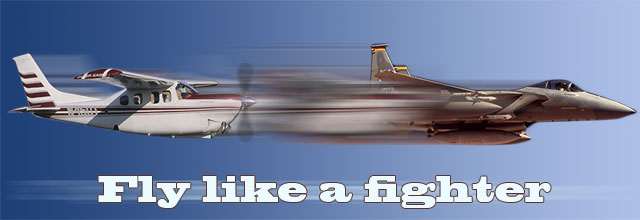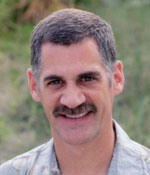
When flying the Diamond DA40 at the Air Force Academy in the summer, we primarily used Runway 16L which is 3,500 feet long.  Shortly after getting checked out as an instructor, my student and I returned to the pattern to hear ATIS reporting winds as 260 degrees at 24 knots gusting to 28, well beyond the 20-knot crosswind limit of the airplane. During my own training, I had been briefed on procedures for landing on the shorter crosswind Runway 26 (2,500 feet long), including the dangerous go-around procedures into rapidly rising terrain less than two miles west of the field. I entered a VFR holding pattern within Class D airspace and waited for my turn to land.
Shortly after getting checked out as an instructor, my student and I returned to the pattern to hear ATIS reporting winds as 260 degrees at 24 knots gusting to 28, well beyond the 20-knot crosswind limit of the airplane. During my own training, I had been briefed on procedures for landing on the shorter crosswind Runway 26 (2,500 feet long), including the dangerous go-around procedures into rapidly rising terrain less than two miles west of the field. I entered a VFR holding pattern within Class D airspace and waited for my turn to land.
Aiming directly for the threshold, I realized I was high and fast, so I performed a slip for over two miles—still a little fast. The DA40 does not like to slow down going downhill. On short final, I was able to get my speed under control and touched down normally. Now with 24 to 28 knots of headwind, I easily came to a stop.
Three weeks later, 20 miles out from pattern entry, the winds were from 180 degrees at 22 knots gusting to 27 knots. When we entered the pattern for Runway 16L, they had shifted to 240 degrees at 22 knots gusting to 27 knots. Now comfortable with the crosswind runway, I broke out of the pattern and coordinated for a runway change and was cleared for a straight in to Runway 26. On a 3-mile final, the winds switched to 210 degrees with the same gusts. Pulling out my wind component chart, I realized the crosswind component was 21 knots for Runway 26. It was also 21 knots for Runway 16L. Both runways were out of limits!
I broke out of the pattern again. The aircraft behind me received landing clearance with the winds back in limits. So I got re-sequenced and was lined up with Runway 26 again, noting some left crab on final. On short final, I had quite a bit of left crab and needed quite a bit of crosswind controls to stay aligned with the runway. It took a lot more distance to stop than the last time I used that runway. It didn’t take long to figure out why, as the next aircraft to enter the pattern was given winds of 180 degrees at 22 knots gusting to 27 knots. Expecting 22 to 27 knots of headwind when I landed, I essentially had none.
This summer my wife and I dodged some isolated thunderstorms in North Texas heading home to Colorado Springs, Colo., in our Cessna P210 only to be welcomed by a massive buildup of red cells on the Nexrad over our home field. We elected to divert to completely clear Pueblo. Set up on an 8-mile final to Runway 8R, the tower reported winds calm, but my wife even noticed us drifting to the right. Correcting back to centerline, the next wind call from tower was 350 degrees at 5 knots. It sure felt like more than 5 knots of crosswind. Starting at 4 miles inbound, tower updated the winds every mile for us. First 350 degrees at 12 knots. Then 350 degrees at 18 knots. Then 350 degrees at 22 knots gusting to 26 knots. It was about then that I was given clearance to a left base with clearance to land Runway 35. By the time I touched down, the winds were from 350 degrees at 30 knots gusting to 38 knots.
After my second experience with the crosswind runway at the academy, I reinforced in my mind not to be dead set on landing on the runway I am lined up with even on short final. I knew Pueblo tower’s wind calls were lagging what was actually happening on final, and I was mentally prepared to circle to a different runway. Even for VFR pilots, think through—and practice—how you would maneuver from one landing runway to another if the winds or other circumstances force such a change.
Larry Brown of Colorado Springs, Colo., is a retired Air Force F-15 pilot who is using the lessons he learned as a fighter pilot as a GA pilot in his Cessna P210. Brown, who has 2,700 hours total time during his 33 years of flying, also was an instructor pilot and flight examiner in the Air Force T-38 and instructor pilot in the T-52, the military’s version of GA’s Diamond DA40. See previous installments of “Fly like a fighter.”



